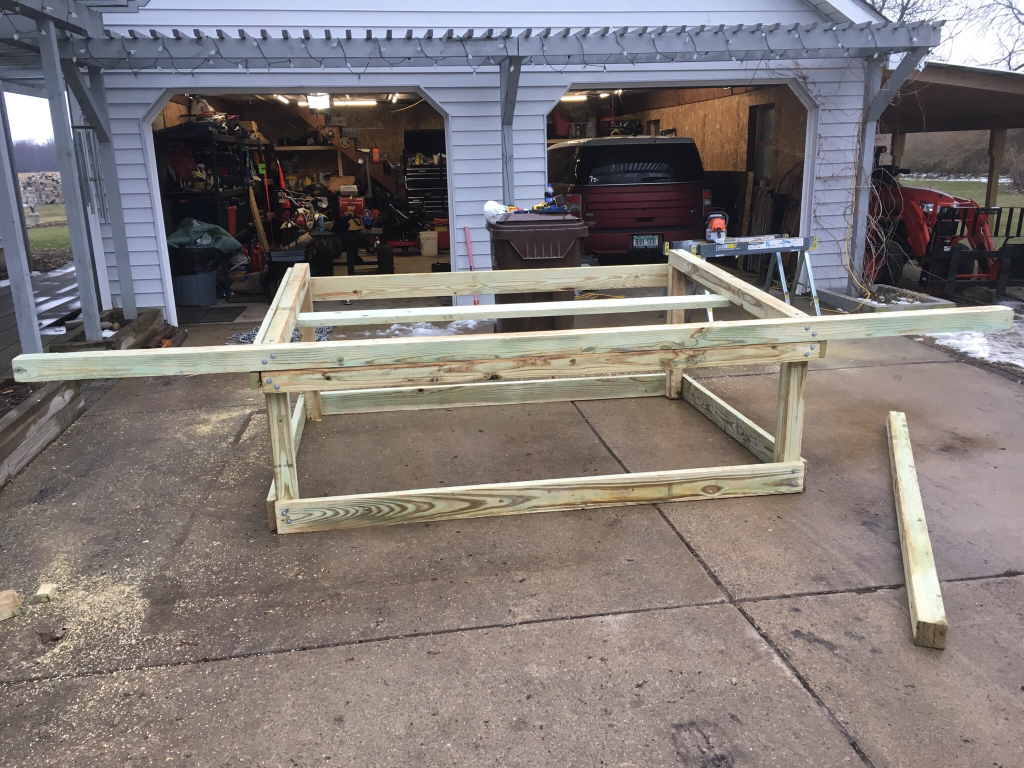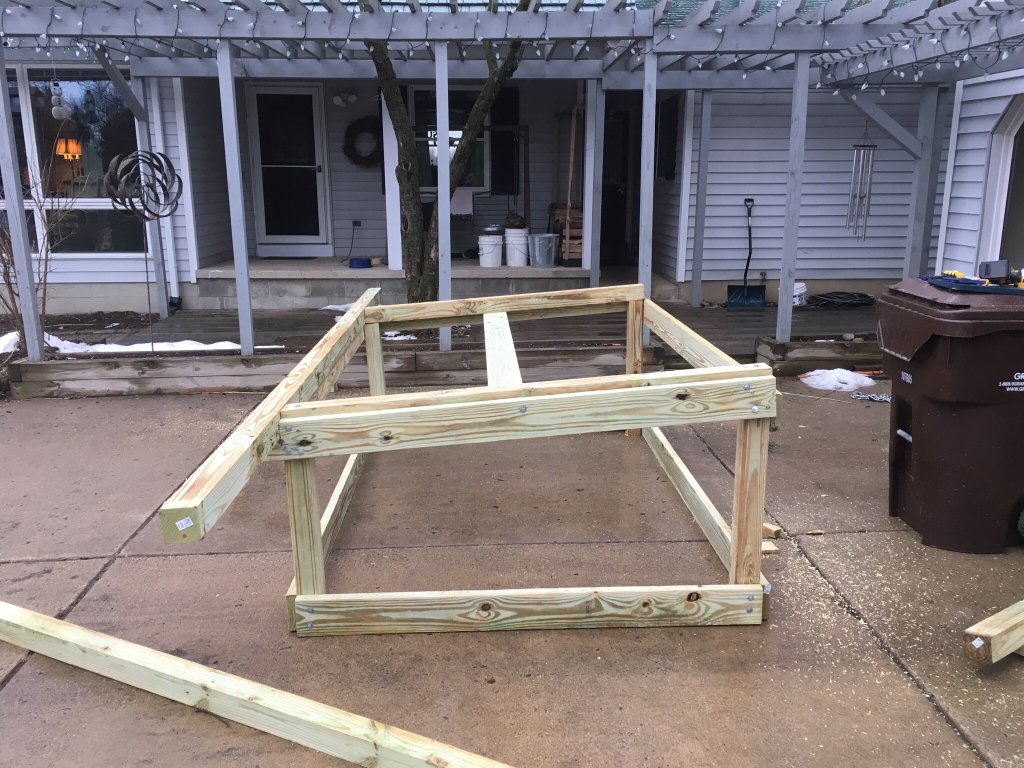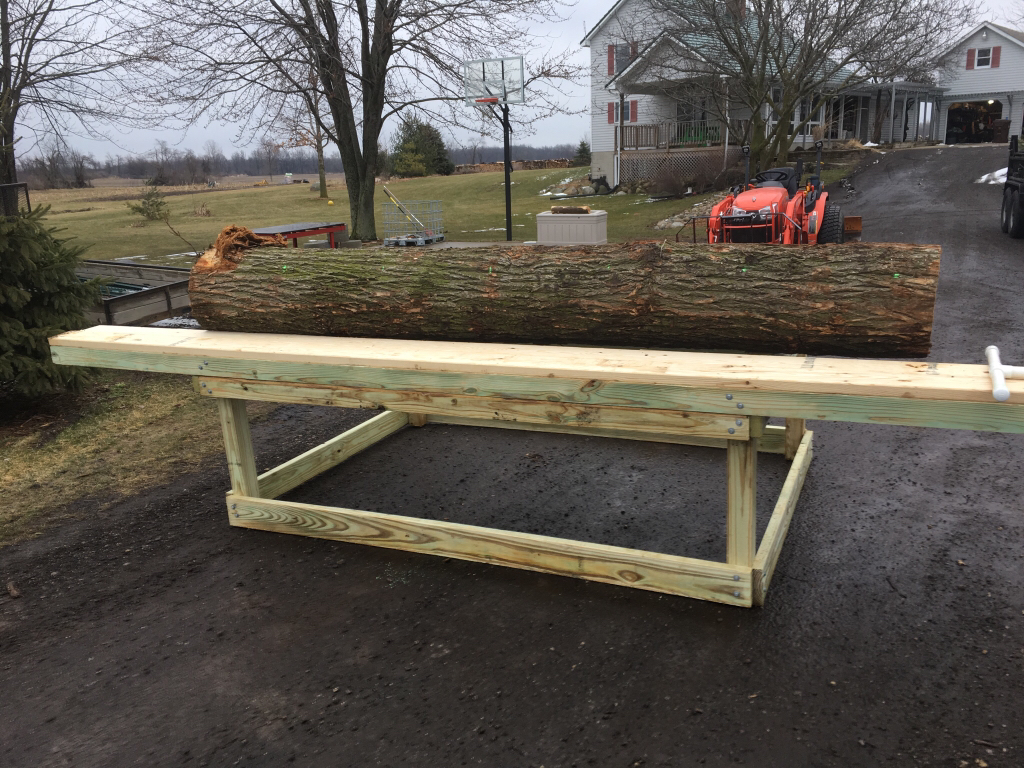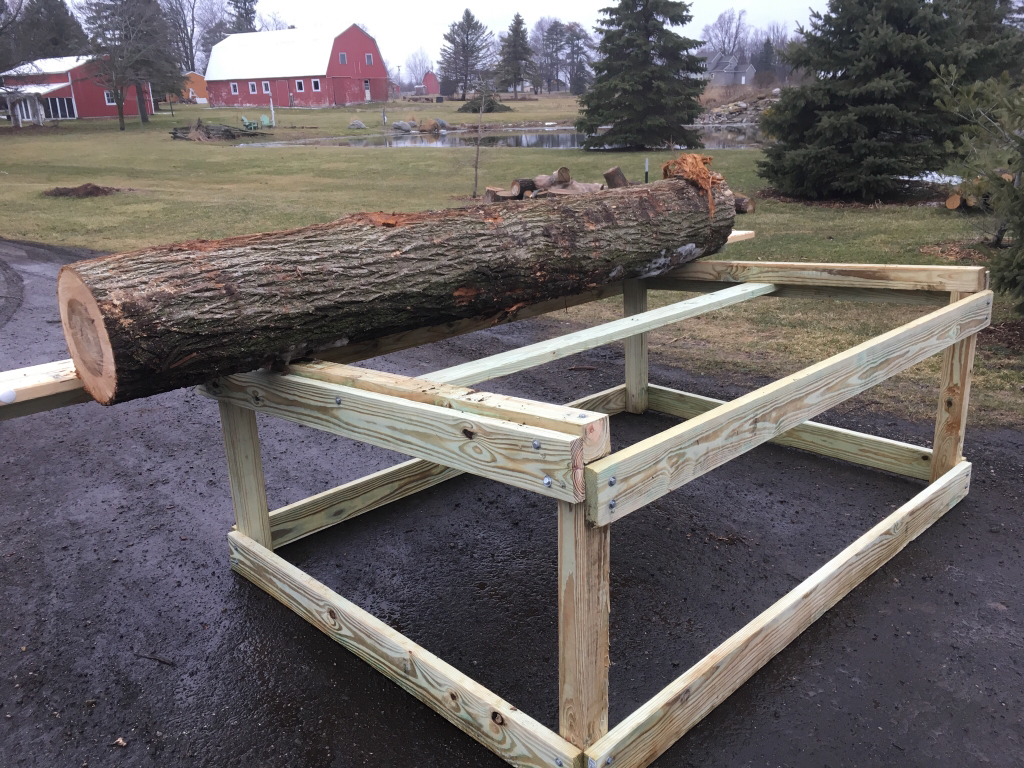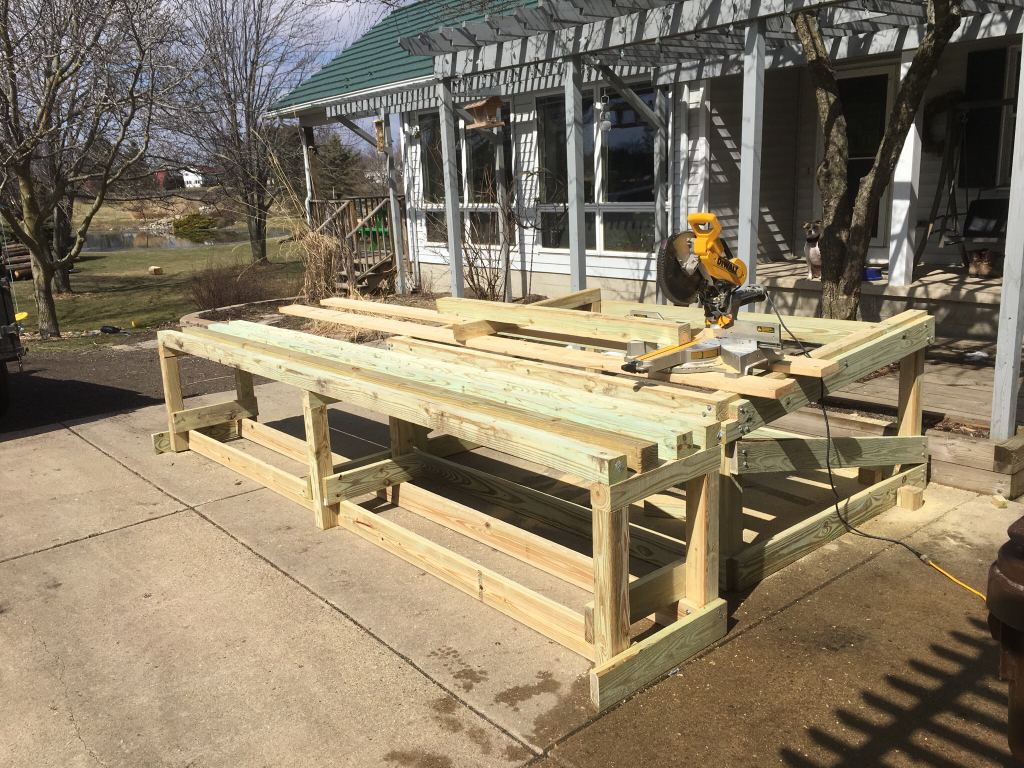
Tools, and note 4 x 6 on edge as a bump stop. I used to use 2 x material but with the saw cuts logs would break of the top edge. End stop is gapped from front stop to clear chips. Could use bigger gap. Orange paint denotes lag bolts in top.

Lots of chips! The pet crate has since got smashed by a run-a-way log...
Also, this deck has a 2" lip on the front. The height is a trade off between stopping logs and lifting rounds over it. I tried short removable uprights but the pressure against them made them hard to pull out. I clean the build-up on the cut table portion with the edge of a plastic wedge. Crooked logs and nubs put downward pressure on the cut table. The front 4 x 6 is lagged between each 16" cutting notch to stiffen it up (you can see that below) Your table will be a work in progress as you find what works for you. I do not have much "forward tip" on my fork lift, a few degrees at best, therefor the uprights at the rear of the table. I lift logs over, lower, and back out.

When loading the deck I unhook this trailer and rollout out of the way and make sure the saw is on it.




The log deck is a great too, however, I guess I would add a huge caution:
The logs do not always stay on the table. When advancing logs have an exit plan. I always advance logs from the side of the log deck, and not from the front, and make sure there are no trip hazards. For one, there is little room to move, to get out of the way, between the log deck and staging table. Rolling logs towards you is a simply a very bad, bad idea.
What you don't see in my pictures are all the logs that have rolled off the front and sides of the table when loading, or shifting and advancing logs to the front. Keep your saws, gas cans, etc. out of the zone. Especially when loading keep other people away, and facing you. I've had logs roll diagonally off the top of the pile when loading, which makes the 'zone' a fairly large foot print. If a log hits the round staging table, the table can hit the splitter. Think Dominos! (the game...)
Using a cut table, like a chainsaw, is simply dangerous. It sounds like your cutting every day, and well aware of potential hazards.
Tools:
Saws chain break. I use it religiously.
I use a short handled peavy to pry, roll and end shift logs. This is my go to tool.
Small logs, I sometimes use a pulp hook if there is no danger of other logs shifting.
A hook-a-roon is sometimes handy, as is a long handled peavy.
A pitch fork for bark, and scoop shovel for chips. (With a day or two of cutting your table will be 4" shorter in height.)
I have an old pet crate that I set my saw on when staging rounds.
A crate for cut-offs, etc., so the ground is clear of trip hazards.
